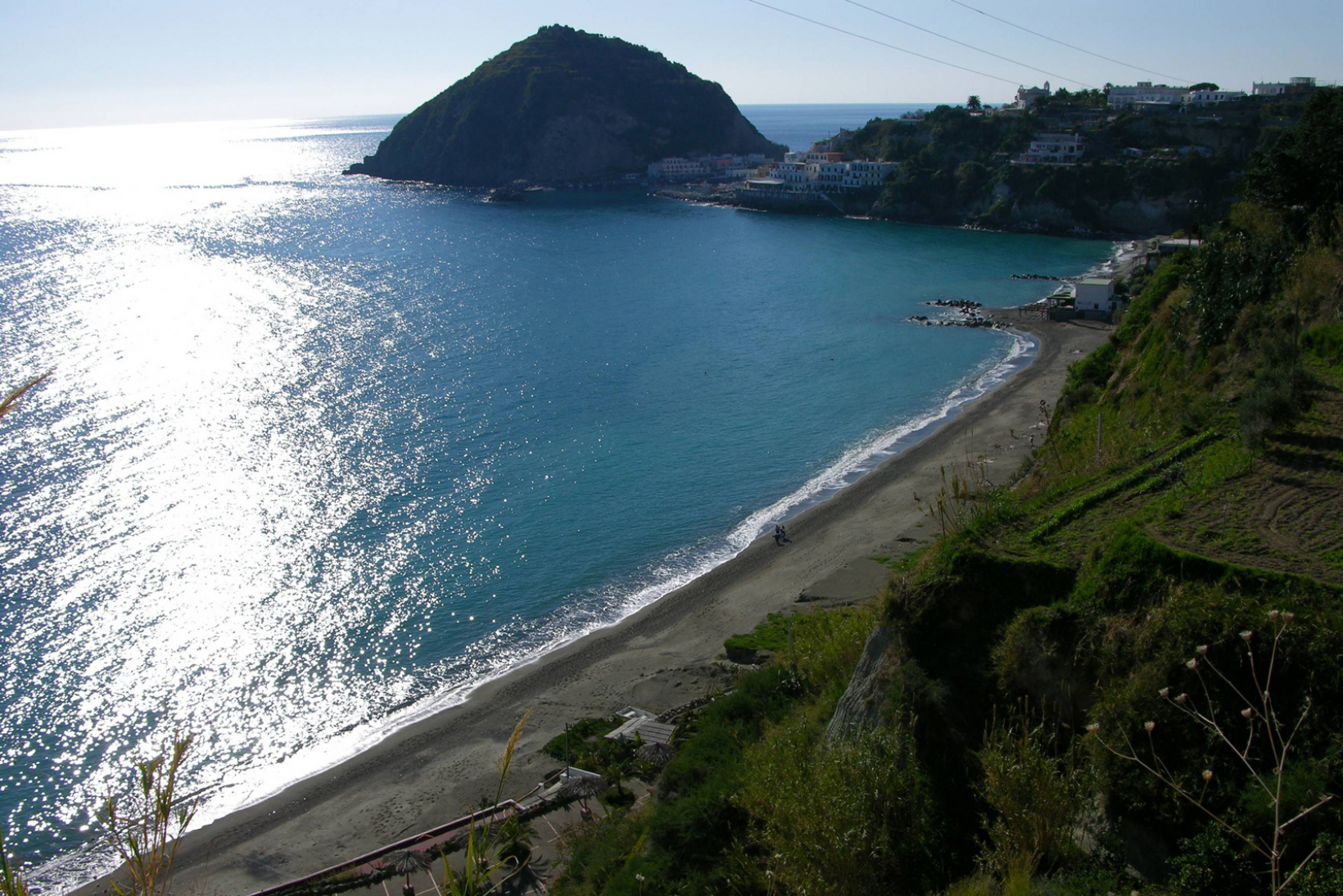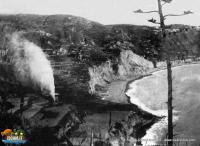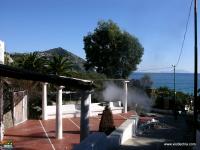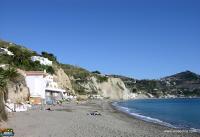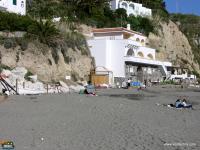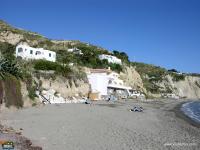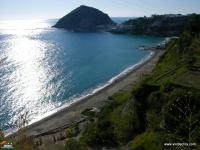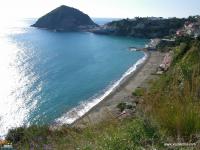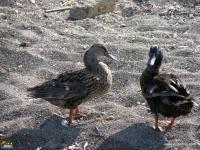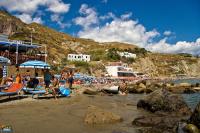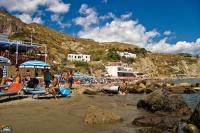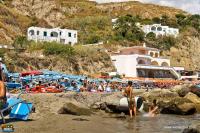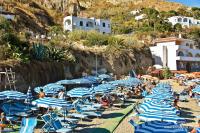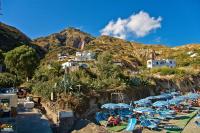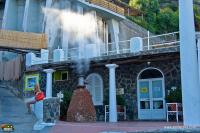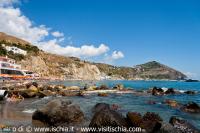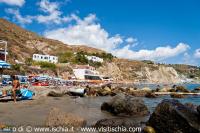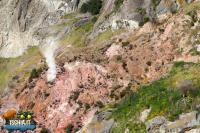Where is the spring
Not far from Sant’Angelo and the Aphrodite Apollon spa gardens, on one of the hottest thermal slopes of the island, in a small patch of beach of the Maronti, for centuries the breath of Tifeo has escaped from the depths of the earth. A very interesting phenomenon due to the volcanic activity of the island of Ischia: "le Fumarole".
How to reach the spirng
The fumarole can be reached on foot from Sant’Angelo by following a road designated for pedestrians which connects the town and the Maronti beach in only 10 minutes. If desired, there is also a Taxi service available by sea which departs from Sant’Angelo’s port.
What its water looks like
This is a most interesting phenomenon resulting from the volcanic activity of Ischia: the Fumarole. From the ground in this area a great thermal energy emanates and produces clouds of vapour in the external atmosphere and bubbles of gas in the ocean at about 100°C, observable with a submarine mask a few meters from the shore.
What the spring looks like
The fumaroles, in simple words, are boiling jets of steam, which represent the demonstration of the ancient volcanic activity of the island. These sources of heat, which are found in depth, also manifest themselves in the hydrothermal activity for which the island is equally famous.
There are 29 springs of water with different properties for the treatment of rheumatism, diseases affecting the respiratory and gastrointestinal systems and so on.
We note the presence of deep faults that surround Mount Epomeo which represent the ascent route for gases and for deeply heated waters.
There are several vents located in different points of the island: in some cases the temperature of the vapors reaches almost 100 ° C, for example in the coastal area of the Maronti, or at Monte Cito or Monte Nuovo. In other locations, however, the fumaroles have a considerably lower temperature that does not exceed 46° C.
Hot springs have variable temperatures ranging from 20° C up to 80° C.
Alternative uses of fumaroles
A curiosity that sees fumaroles as protagonists concerns their use for gastronomic purposes. It seems that the steam of the fumaroles or the hot sands present in the coastal areas are an excellent means of preparing exquisite dishes. Thanks to the heat emanating from the mouths, it is possible to cook everything: from hard boiled eggs to more complex dishes based on fish and meat.
Where the sand reaches 100 ° C it is possible to cook eggs, grilled mussels and perfect chicken in foil!
To create the natural oven, simply dig a ditch large enough to contain the chicken, which must be previously wrapped in aluminum foil. In the foil it is also possible to add vegetables and spices to make everything tastier.
Once the ditch is closed, it will be enough to wait an hour to enjoy a chicken cooked thanks to the heat emanating from the boiling sands.
This operation is not without risks, because, as we have indicated previously, the sands, springs and mouths emit jets of steam at high temperatures which can cause burns.
Therefore, if you try to cook with fumaroles or with boiling sand, be careful not to get burned!


